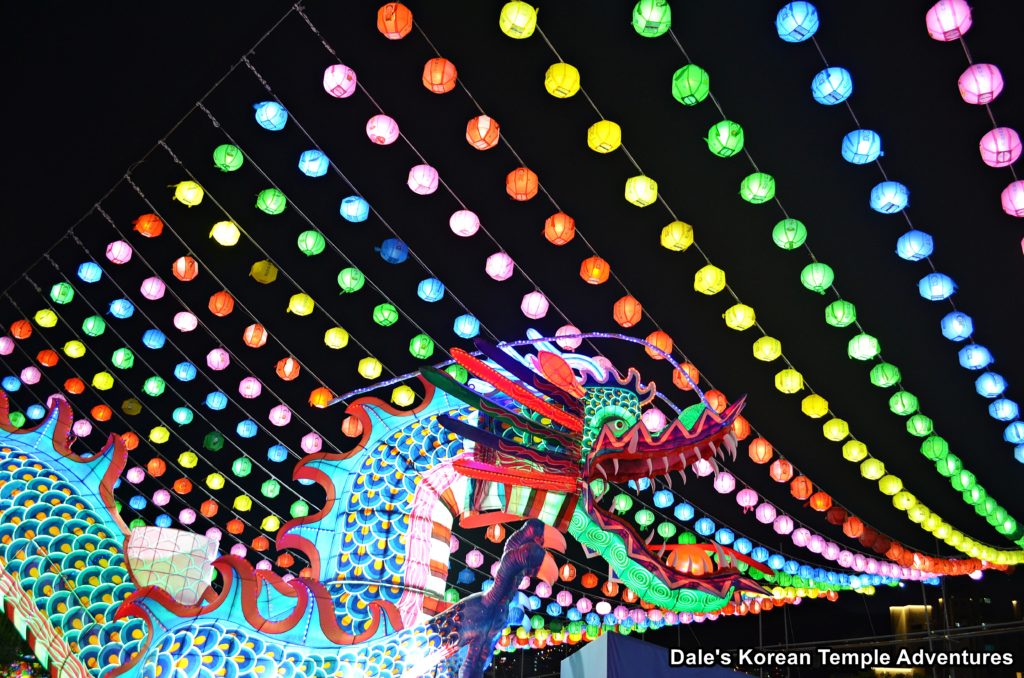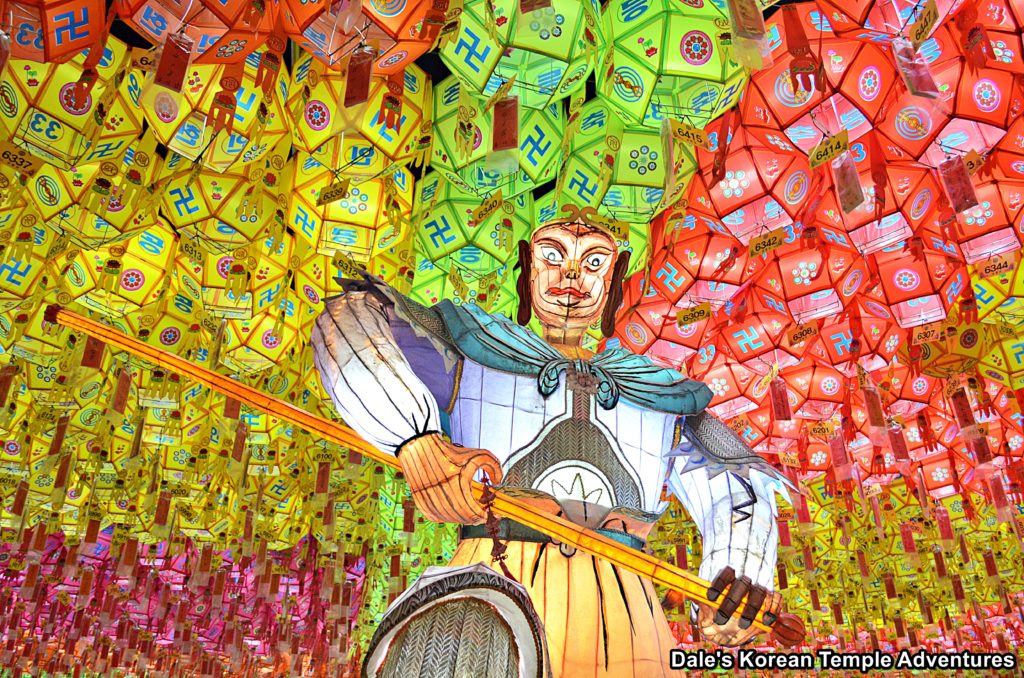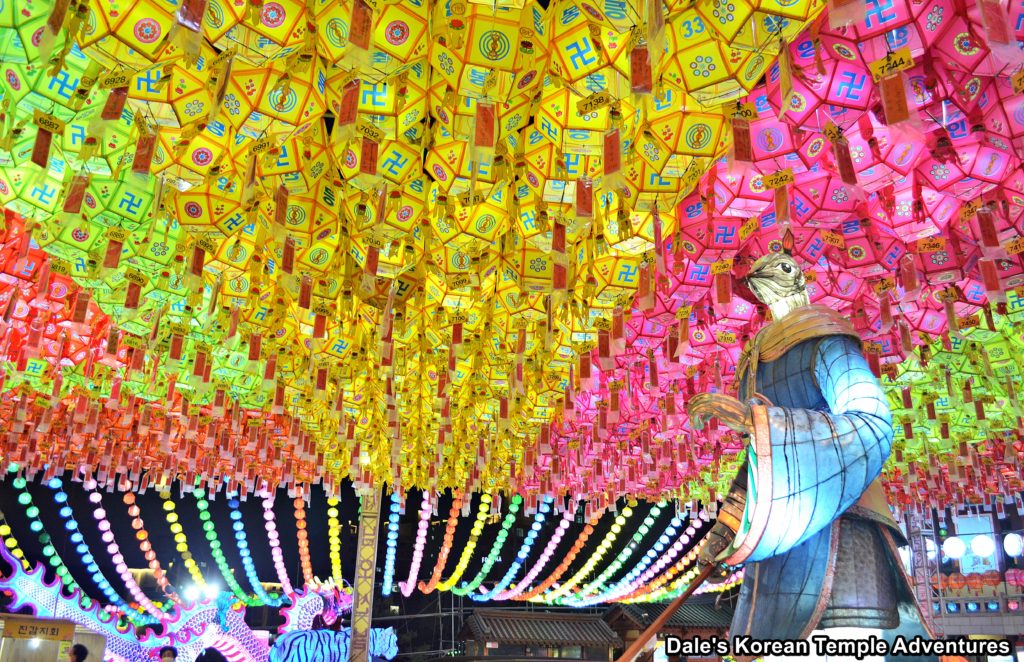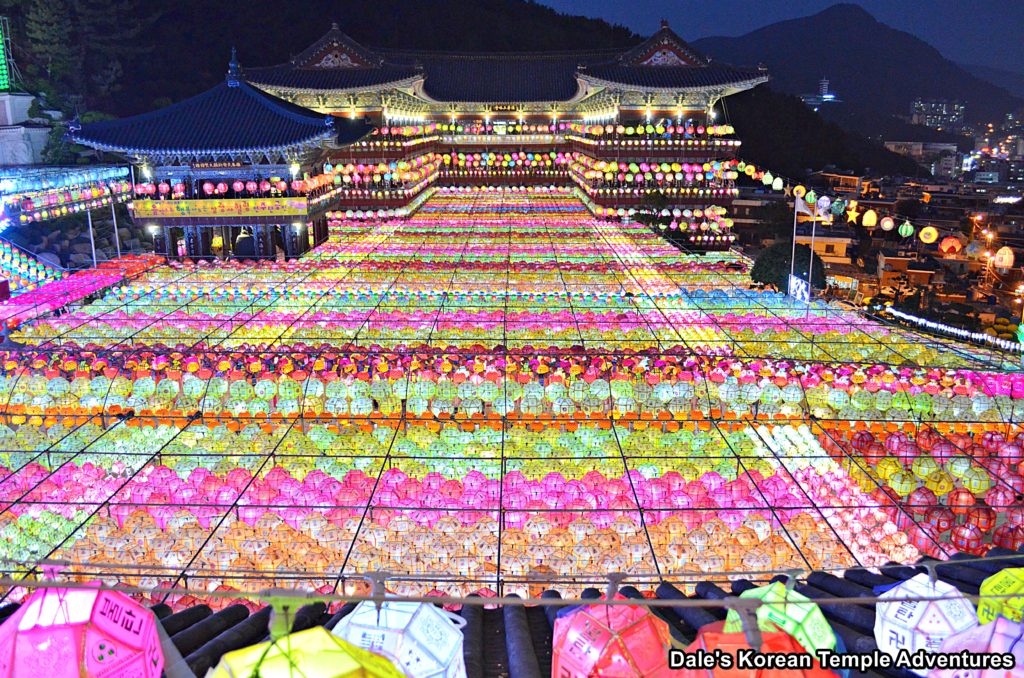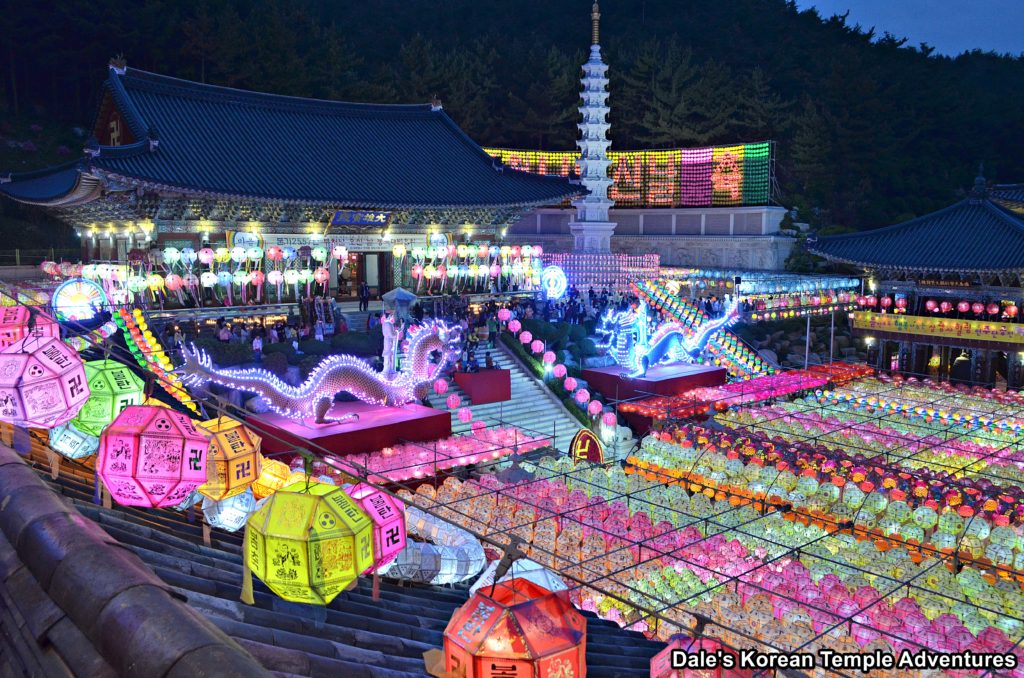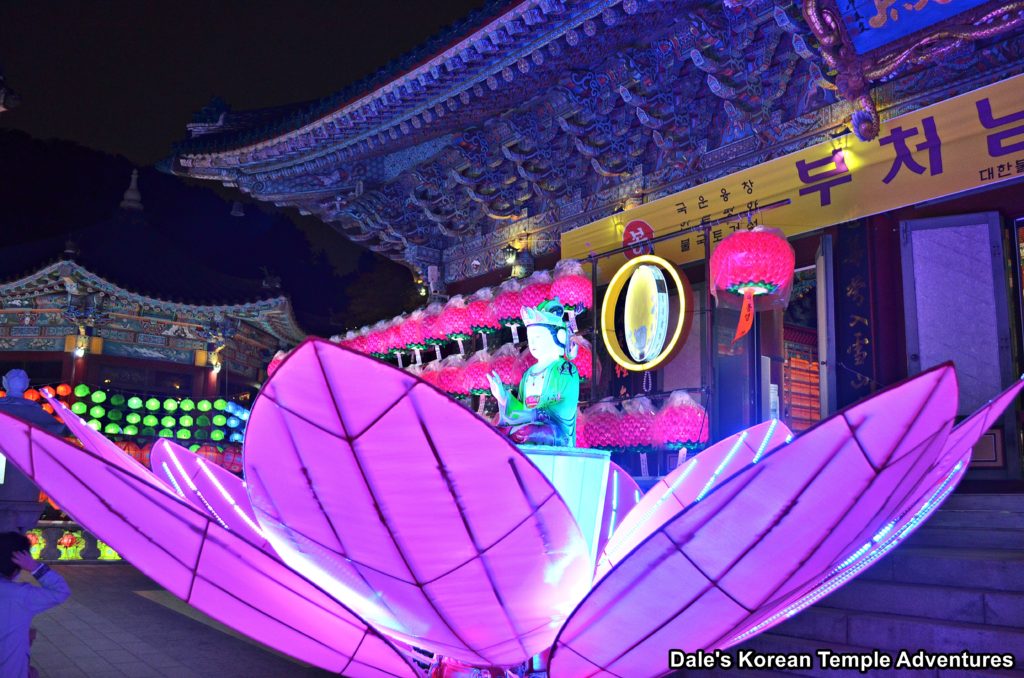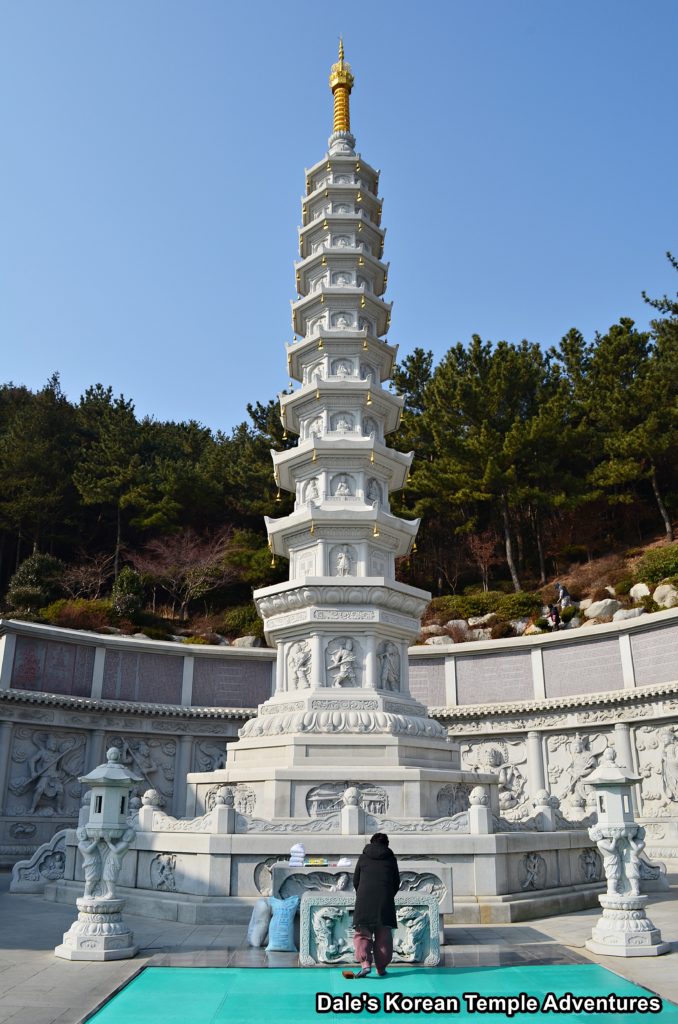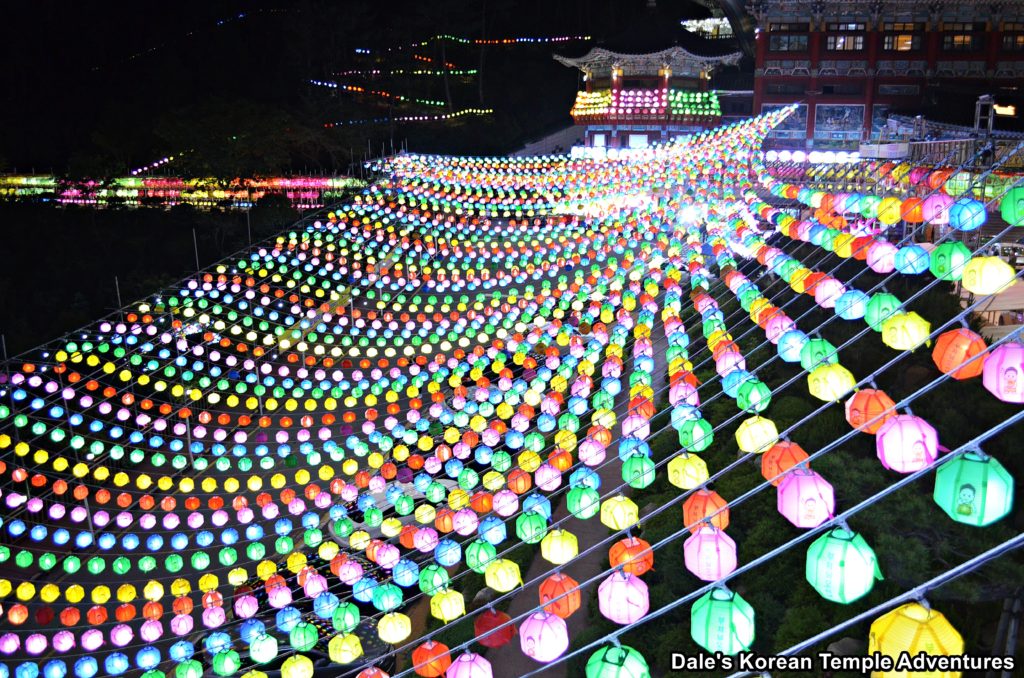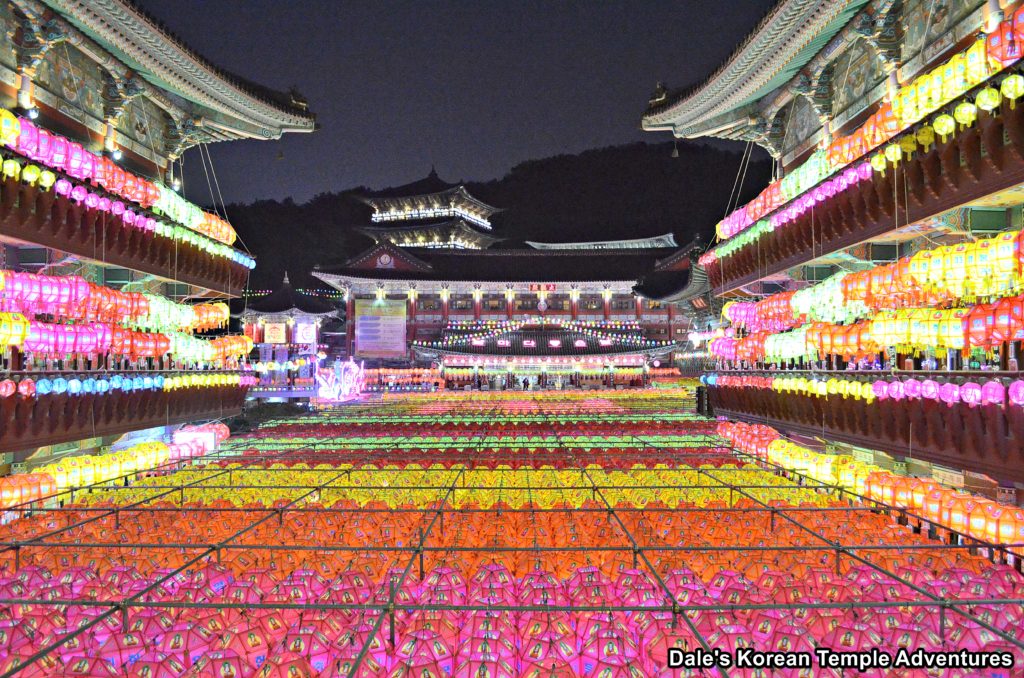Samgwangsa Temple – 삼광사 (Busanjin-gu, Busan)
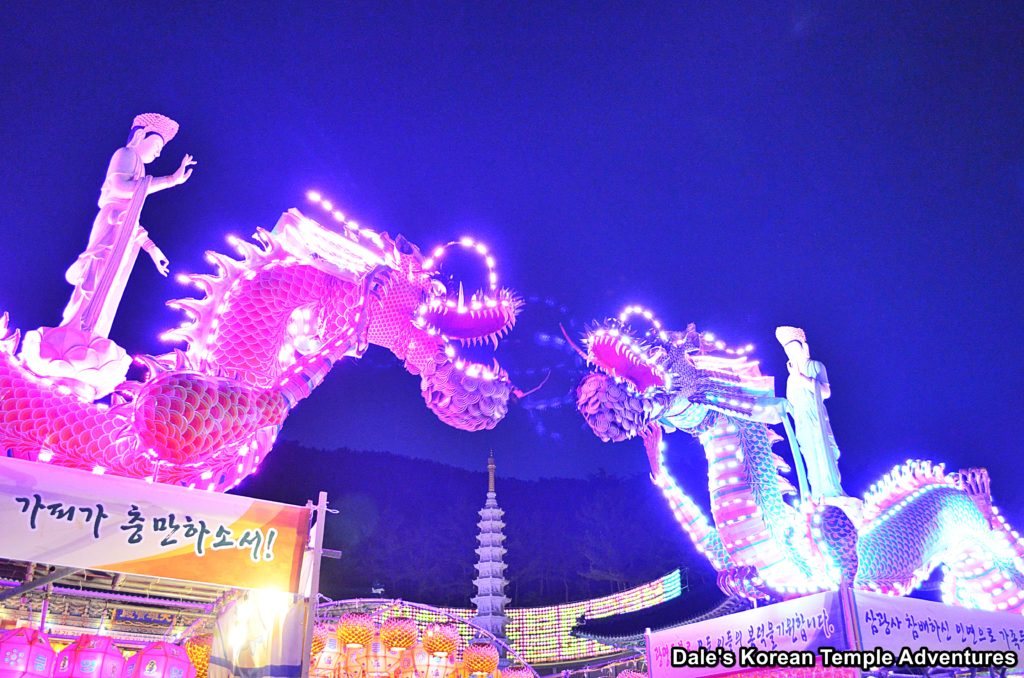
Temple History
Samgwangsa Temple is situated on Mt. Baekyangsan (641.3m) in Busanjin-gu, Busan. Unlike the majority of temples in Korea like neighbouring Beomeosa Temple and Tongdosa Temple, Samgwangsa Temple doesn’t belong to the Jogye-jong Buddhist Order. Instead, it belongs to the third largest Buddhist Order in Korea: Cheontae-jong Order. The temple is a rather recent creation with it being built in 1983. Throughout the years, it has continued to grow with recent additions like the Myeongbu-jeon Hall and the Geukrak-jeon Hall on the upper hillside. Specifically, Samgwangsa Temple is dedicated to the Bodhisattva of Compassion, Gwanseeum-bosal. And Samgwangsa Temple is best known for its lantern festival that it hosts each year during Buddha’s Birthday. In total, they hang over 40,000 colourful lanterns.
Temple Layout
But even though the temple is rather young in age compared to other more historic Buddhist temples in Korea, Samgwangsa Temple more than makes up for it with colour and artistry. The first thing you’ll notice when you enter the expansive temple courtyard (unless it’s Buddha’s Birthday because then it’ll be packed) is just how massive some of the temple buildings are.
To your immediate right is a multi-floored building that hosts various temple activities like Buddhist lessons and classes. Next to this structure is the temples Jong-gak, or “Bell Pavilion,” in English. The bell pavilion was built to ensure national security and welfare. Housed on the first floor of the bell pavilion is a large Brahma Bell (Beomjong) with an ornamental Poroe dragon on top of it. The bell stands three and a half metres in height. On the second floor are the three other Samul, “Four Dharmic Musical Instruments,” in English, like the Dharma Drum (Beopgo), the Fish Gong (Mokeo), and the Cloud Gong (Unpan)
And to your far left is another large building that acts as the temple auditorium. This assembly hall can house 10,000 people at one time, and there’s usually a lot of older women inside at all times praying to Gwanseeum-bosal on the main altar of this cavernous hall all hours of the day. The name of this hall is the Jikwan-jeon Hall; and not only does it act as an assembly hall, but the building also acts as a Buddhist college and a library.
Up the hill, and behind the Jikwan-jeon Hall, and overlooking the rest of the temple grounds, is the Myeongbu-jeon Hall that houses Jijang-bosal (The Bodhisattva of the Afterlife) inside. This hall was completed in 1996. The exterior walls are beautifully decorated with traditional dancheong colours and murals of the monk Wonhyo-daesa and beautiful Bicheon (Flying Heavenly Deities). Inside the hall, and resting on the main altar, is a jade statue of Jijang-bosal. He’s surrounded on both sides by equally large statues of the Ten Kings of the Underworld. Finally, and to the left, is a suspended Dragon Ship of Wisdom that hangs from the ceiling of the shrine hall.
To the left of the Myeongbu-jeon Hall, and still overlooking the temple grounds, is the Geukrak-jeon Hall dedicated to Amita-bul (The Buddha of the Western Paradise). Much like the former shrine hall, the Geukrak-jeon Hall is filled with beautiful statues and a fierce looking dragon under the canopy that hangs over the centralized main altar with Amita-bul sitting in the centre.
Finally back in the main temple courtyard, and down from the heights of the temple, you’ll find the Daeung-jeon Hall straight ahead. This expansive main hall is decorated with a set of Palsang-do murals that depict the life of Seokgamoni-bul (The Historical Buddha). It’s joined by fierce wood reliefs of colourful Gwimyeon (Monster Mask) at the base of the front doors to the main hall. Inside, you’ll find a large triad of statues resting on the main altar. Sitting in the centre, not surprisingly, is Seokgamoni-bul. On the far left wall is the Shinjung Taenghwa (Guardian Mural) wood relief. And on the far right wall is another ornate wood relief of Jijang-bosal.
To the right of the main hall, and really the main highlight to the temple, unless you come during Buddha’s Birthday, then it’s the lanterns, is the nine story Daebo Pagoda. The pagoda stands thirty metres in height and is topped by a gold plated lotus finial. Around the base of this pagoda are the twelve zodiac generals and the eight scenes from the Buddha’s life. Surrounding the body of the base are 53 sculptures of shamanic guardians and Gwimyeon. The pagoda rests in a semi-circle of stone. And inside the pagoda are ten sari (crystallized remains) of the Buddha. Seven of these remains came from Myanmar, while the other three were given by the Dalai Lama himself.
Admission to the temple is free, and Samgwangsa Temple is open twenty-four hours a day.
How To Get There
Samgwangsa Temple can be reached in two different ways. One is the more expensive way. From downtown Seomyeon, Busan, you can catch a taxi. From here, the ride should cost about 5,000 won. The other way you can get to Samgwangsa Temple is by bus. Bus #44, #63, #81, #83-1, #103, #112, #133 or #201 all bring you to the temple. You’ll get off at Seongyeong apartments. Also, Bus #15 from Yeong-gwang Bookstore (영광도서), across the street from Lotte Dept. in Seomyeon, goes directly to Samgwangsa Temple, too. The bus stop is out the exit with the very long escalator. It leads to the bookstore and the bus stop.
Overall Rating: 9/10
During the Buddha’s Birthday, this rating is easily bumped to a ten out of ten. But on an ordinary day, simply because it’s lacking the historical significance, it ranks a little lower. However, with that being said, Cheontae-jong Order temples, which Samgwangsa Temple is apart of, usually are a lot more ornate than more traditional Jogye-jong Order temples like Beomeosa Temple or Bulguksa Temple (which you might have noticed, and this is the reason why). Filled with things to see like the nine story pagoda and surrounding stone masonry, the temple halls, and the amazing artwork that fills and surrounds these shrine halls, Samgwangsa Temple in Busan is a must-see, not only for temple travels, but for anyone interested in the sublime.
